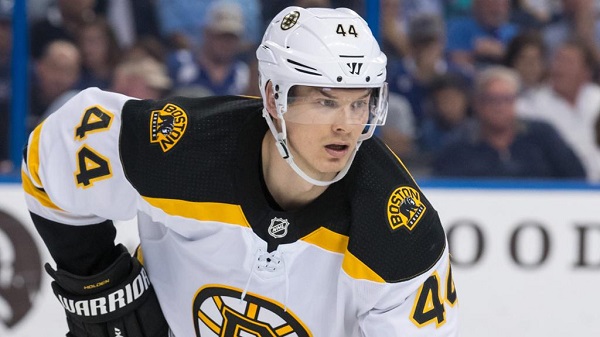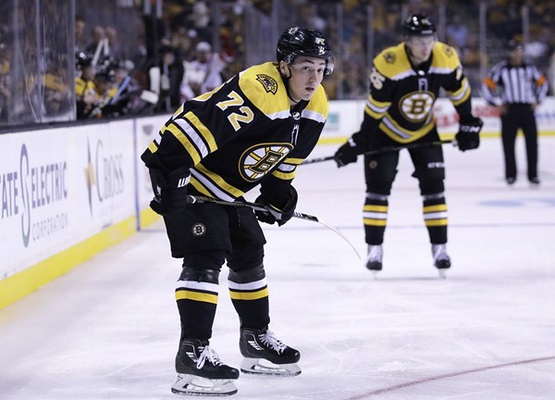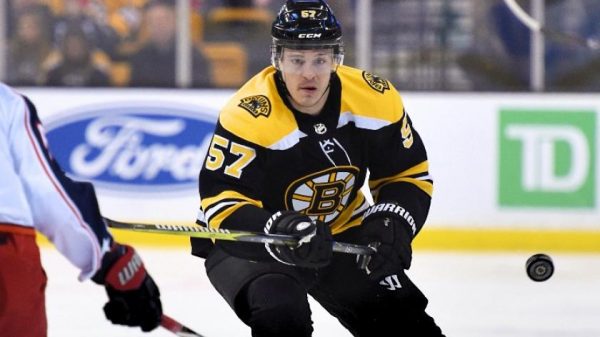
By Ray Guarino | Follow me on Twitter @rayguarino
As the Boston Bruins approach the 2018 trade deadline, they are steamrolling through the league. After a lackluster beginning of the season, they went 18-3-4 in December and January, including 18 straight games without a regulation loss. On February 1st, 2020, they are 30-11-8, good for 66 points. That puts them second in the Atlantic Division, four points behind the Tampa Bay Lightning with two games in hand.
February 20, 2018, The Boston Bruins trade Rob O’Gara and a 2018 third-round pick to the New York Rangers for Nick Holden.

The Boston Bruins, looking for some depth on the back-end, bring in Nick Holden (6’4″ 215), a left-shot defenseman that can play both sides. Holden was coming off of a 2016-2017 season where he scored 11 goals while playing on the top two defensive pairings in New York.
“We were on our 10th defenseman last year when we got into the playoffs, so if we’re fortunate enough to get back in there now this year, then I think we needed to address it,” said Sweeney.
Unfortunately, Holden didn’t really work out for the Bruins. He got into 18 regular-season games for the Bruins, giving them 19:05/game of ice time. Through two rounds of playoffs, he only played in two games and was a healthy scratch the remaining games.
Rob O’Gara, a product of Milton Academy and Yale University, was a 2011 fifth-round pick for the Boston Bruins. He was primarily a defensive defenseman throughout his ECAC and AHL career. O’Gara ended up playing 22 games for the Rangers during the rest of the 2017-18 season and has not played in the NHL since then.
Defensive insurance, which they ultimately didn’t need, cost them a third-round pick. Grade D
February 22, 2018, The Boston Bruins trade Frank Vatrano to the Florida Panthers for a 2018 third-round draft pick.

Frank Vatrano, a Springfield, Massachusetts native, played his college hockey at UMass-Amherst. In 2014, Vatrano signed an amateur try-out contract with the Boston Bruins AHL affiliate, the Providence Bruins, and completed the 2014-15 season there. He would go on to score ten goals in ten games to finish out the season. The following season Vatrano would dominate the AHL with 36 goals in 36 games with an additional eight goals in 39 games for the Boston Bruins.
Going into the 2016-17 season, Vatrano had the inside track on a roster spot on the Boston Bruins. Unfortunately, he tore ligaments in his left foot, putting him out of action from training camp until he made his debut on December 22, 2016, ironically against the team he was ultimately traded to, the Florida Panthers. He ended up playing 44 games that year for Boston scoring ten goals. The 2017-18 season was a disaster for Vatrano. His play was inconsistent, and he found himself as a healthy scratch throughout the year. He ended up with two goals in 25 games before he was dealt to Florida. Getting a third-round pick for him was a good return. Grade B
February 25, 2018, The Boston Bruins trade a 2018 first-round pick, a 2019 seventh-round pick, Ryan Spooner, Ryan Lindgren, and Matt Beleskey ($1.9M retained-50%) for Rick Nash ($3.9M retained-50%)

There’s a lot to unpack here. Let’s start with the salary cap ramifications. For the current 2017-18 season, the Bruins saved $825,000. Rick Nash was a pending unrestricted free agent, Ryan Spooner was a pending restricted free agent, and Matt Beleskey had two more years left on his contract, of which the Bruins are on the hook for $1.9M per year. Ryan Lindgren was unsigned and playing collegiately at the University of Minnesota.
In Rick Nash, the Bruins got the second line right-winger they’ve been searching for since the days of Nathan Horton and Jerome Iginla.
“I think Rick Nash brings a little different dimension to that (second) line in puck protection and ability to get to the hard areas when really the season becomes even harder to get there,” Bruins general manager Don Sweeney said. “Hopefully, David will have some juice as a result of this and that line, in general, will find a way to finish a few more goals, and more importantly continue to play well defensively, which Rick has played in the past.”
At 33 years old, Nash was no longer the 40 goal scorer he was earlier in his career. Injuries to his shoulder, knee, and groin, along with multiple concussions, had severely slowed his career down at this point. In his last two seasons in New York, he averaged 19-18-37 while averaging 63 games per year.
Nash played in 11 games with the Bruins, tallying three goals and three assists, before sustaining another concussion and missing the remainder of the regular season. He returned for the playoffs and played in 12 games, scoring 3-2-5 with a -7. Nash ended up retiring after the season due to lingering concussion issues.
Giving up Ryan Spooner, who ping-ponged between the second-line winger and healthy scratch, was smart on the Bruins part. He was going to get paid well on his RFA contract (the NYR gave him a two-year contract with an AAV of $4M), and his game was too one-dimensional for the Bruins. Lindgren was a hard-nosed defenseman with limited offensive skills that was down the depth chart for the Bruins. Giving up a first-round pick is always hard to swallow for a rental player, but that was the going rate at the time. Especially, without giving up a top tier prospect. Moving out Matt Beleskey, even with a 50% retention, was also a win.
After a couple of down years, I like that Sweeney swung for the fences. Even though it didn’t work out, the Bruins let the league know that they were back in the thick of things. Grade B
February 26, 2018, The Boston Bruins trade a 2019 fourth-round pick to the Chicago Blackhawks for Tommy Wingels

No need to over-analyze this one. The fact that he even played 18 regular-season games and 4 playoff games is a big loss. Grade F
Stay tuned as our next installment includes a couple of significant trades!


Leave a Reply